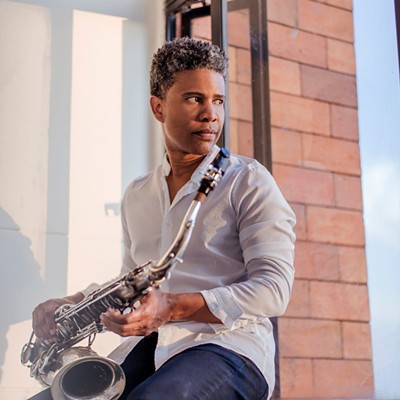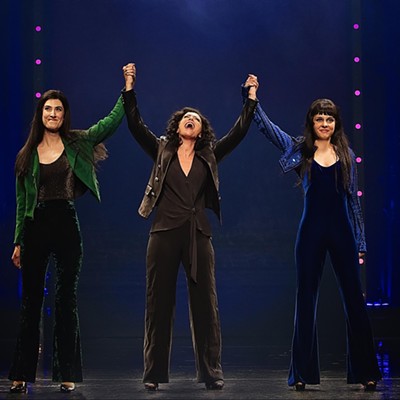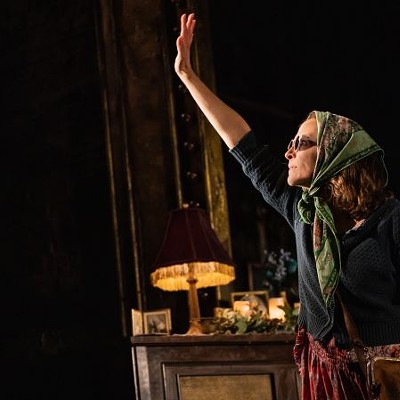Texas is the kind of place that's changed a lot over the last several decades, and the Houston area seems to be transforming at a particularly fast pace. Nowadays, the city and surrounding area is getting attention for its emergence as an international city, being home to many cultures and people from all over the world. In the early '70s that was still a long way off, and Houston was probably more widely known as a town built on oil money and NASA, where outsiders figured most residents probably listened to country music and dressed like cowboys.
In 1970, a club owner in Pasadena, Texas named Sherwood Cryer teamed up with country singer Mickey Gilley, and decided to reopen a club he owned that had previously been named Shelley's. The club was almost immediately successful, and grew in popularity, as did Mickey Gilley's music, over the next few years. The huge honky tonk drew crowds of people throughout the week, becoming a home away from home for many of the area's residents who worked in nearby refineries and at other jobs before heading to Gilley's Club to dance, drink, and try to find love, or a reasonable approximation of it, somewhere across the vast expanse of the club's concrete floor. One time regular Paul Wagner described the place with a mixture of nostalgia tempered with memories of the club's shortcomings.
"It was almost like a huge barn. The bathrooms were always filthy, and it was hot a lot of the time. I worked at a gas station over on South Shaver, and would head to Gilley's after work sometimes. I loved the place, but you had to watch your step, it didn't take much to get in a fight there."
Gilley's Club's reputation as an enormous rough and tumble honky tonk eventually got Hollywood's attention, and in 1979 a big budget movie production rolled into Pasadena to make a film heavily featuring the night club, and starring John Travolta and Debra Winger.
"Urban Cowboy" tells a relatively simple tale. Bud moves from his family farm in Spur, Texas to Pasadena to stay with his Uncle Bob's family while he works in a refinery saving money to move back out to the country and buy some land. He almost immediately visits Gilley's nightclub and rapidly gets drawn into the scene there. Almost as quickly, Bud meets Sissy, an attractive regular at the club, and they decide to get married within a short period of time. The ceremony takes place at Gilley's, and the newlyweds move into a new trailer that Bud has bought nearby. Unfortunately, wedded bliss is fleeting, because the couple fights often and soon a creepy ex-con named Wes starts hanging out at the club, rapidly seducing Sissy and causing Bud a lot of grief. The remainder of the film has Sissy shacking up with Wes, who turns out to be a violent monster, and Bud turning to a rich woman who likes to slum it with working class cowboys, before the movie's protagonists end up together again, presumably to live something resembling "happily ever after." It's not a particularly uplifting story, and none of the characters seem like good people, but "Urban Cowboy" still manages to entertain.
The movie makes a few interesting blunders along the way that observant fans can pick up. There are mountains in the distance behind Bud and Sissy's trailer park, and the last time I checked Pasadena, Texas is bereft of mountain ranges. Most of the film was filmed in the area, but that scene obviously was not. The film's villain, Wes, shares a tequila drinking scene with Sissy, where he makes a toast to "La Vida Luna," which he incorrectly translates as "the crazy life." The toast he makes would translate to "The life moon," and is an odd thing to say even after a few shots of tequila.
"Urban Cowboy" was released in 1980, and quickly became a hit, giving Pasadena and Houston a brief turn under the Hollywood spotlight, and changing Gilley's in the process. Andy Warhol and other celebrities flew in for the premiere, bringing a new kind of attention to the area.
The film is a time capsule that captures an interesting period in the area's history, and feels like it documents many changes in our culture, both locally and nationally. Gilley's is almost a character in the film itself, being the primary location where most of the action takes place, and introducing America to things like mechanical bulls, which play a major role in the film's plot, as well as "The Cotteneye Joe," which was briefly a dance fad. John Travolta gives a convincing performance as Bud, and was a superstar at the time, coming off of hit films like "Saturday Night Fever" and "Grease," so "Urban Cowboy" had a lot of influence nationally. Country music was also changing, with outlaw country ceding way to a much more smooth pop style, and the soundtrack album from Urban Cowboy spawned numerous hits such as
And for awhile, "Urban Cowboy" made hanging out at places like Gilley's cool to a newer kind of crowd. A majority of the club's earlier regulars, many of which ended up in the film, moved on, displaced by upscale invaders brought in by a new trendiness for honky tonks the film had created. Paul Wagner remembers not enjoying the changes that "Urban Cowboy" brought on when it was released.
"Most of the people who used to hang out at clubs like Gilley's were like me, working class folks just looking for a place to hang out and drink a few beers. After the movie came out, things were just different, and not just at Gilley's. The people changed, and a lot of us just quit going out like we used to."
For better or for worse, Gilley's Pasadena location trudged on for a few more years, while a bust in the oil industry brought a downward turn for the Houston area and Pasadena's refineries. In the late '80s, a contentious feud between Mickey Gilley and Sherwood Cryer led to the club being closed, before it was gutted by an intentionally set fire in 1990, bringing an effective end to an era of urban cowboys and mechanical bulls.
Texas history is sprinkled with tales of certain locations which reach a sort of legendary status. The famous Chicken Ranch brothel in La Grange is one of those places, and Gilley's Club in Pasadena is another, both forever enshrined by Hollywood films featuring a part of their story.
There have been recent rumors that Mickey Gilley will reopen some version of his world famous nightclub in Pasadena, but whether or not that will happen isn't certain. What is certain is that the Houston area has changed enormously over the 35 years that have passed since "Urban Cowboy" captured a colorful slice of local life, and it's impossible to go back in time again. But that's what movies are for. They freeze a moment in time forever, and in the case of Gilley's Club and "Urban Cowboy," that's a very interesting moment of local history.





